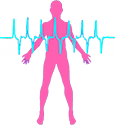01 Nov Rusty Lozano Featured on CBS News for Brain Mapping
Here is the complete article with CBS News featuring Rusty Lozano, the Center for Biofeedback and Behavioral Therapy, and his Brain Mapping techniques.
HIGHLAND VILLAGE (CBSDFW.COM) – Nick Van Den Handel, 13, remembers how he felt taking medication for ADHD, and how much better he feels now.
“It feels awesome because I’m not actually controlled by anything else,” Nick said.
“When I had those medications on me I basically did not know who I was some of the time,” his older brother Casey Van Den Handel agreed.
Like millions of other school aged children diagnosed with Attention Deficit Hyperactivity Disorder or ADHD, Nick and Casey followed the most common protocol available: drugs. At the time mom, Kelly Van Den Handel, says she didn’t know there were any options. Side effects of the drugs meant sleepless nights for the boys and lack of appetites. Though their behavior improved, Kelly wanted a change.
Last May, it came in the form of an odd looking cap filled with holes into which therapist Rusty Lozano injects gel.
Q.E.E.G. stands for quantitative electroencephalography. It’s a technology that’s been around since the 70?s that is now commonly called brain mapping.
As Nick sits back and relaxes, each gel filled hole transmits information to a computer screen, and shows brain waves in real time. The pattern is what Lozano says holds the key for treatment.
“The brain mapping is measuring all of the activity in the brain from 19 different sites and we can determine what areas are operating too fast, too slow, and we can target the areas that need work,” explains Lozano who says the fast areas which show up as red on the maps, can be linked to attention and behavioral issues.
Kelly had both boys mapped. A doctor interpreted the results and provided Lozano a specific treatment plan of Neurotherapy.What looks like a computer game is actually a tool to retrain nick’s brain. After five months of Neurotherapy and the boys no longer on any medication, Kelly VanDenHandel says the differences are clear.
“I’ve had no phone calls from teachers saying your kids are too disruptive in class, they’re driving me crazy in class. I haven’t gotten anything like that,” Kelly said but for her solid proof came in the form of a re-map which showed less red on his scan.
But not everyone agrees that brain scans can show proof of progress. Clinical psychologist Dr. Ray Levy says although Neurotherapy is a tool that works for some children with ADHD, he cautions against using brain map images as proof of success. We showed Dr. Levy nick’s before and after images.
“Looking at these pictures alone does not tell me that the ADHD has improved,” Dr. Levy said. “It tells me that there have been shifts in the brain.”
Kelly VanDenHandel says the remap confirmed for her that the Neurotherapy is working, but her real proof is her children’s behavior.
“It was one of the best decisions we’ve ever made,” she concluded.


Mary Dell Martin
Posted at 23:53h, 21 NovemberI recently finished a book called The Brain that Changes Itself by Norman Doidge. The author writes about brain mapping and, among other things it treated successfully was a condition that made the patient feel that he was falling all the time. I have something similar — dizzy all the time. Epley maneuvers have not helped and now I am in vestibular balance rehab and it seems to help some of the time. Other times, I decide I am actually getting worse. Could the brain mapping you do there help me? — Mary Dell Martin